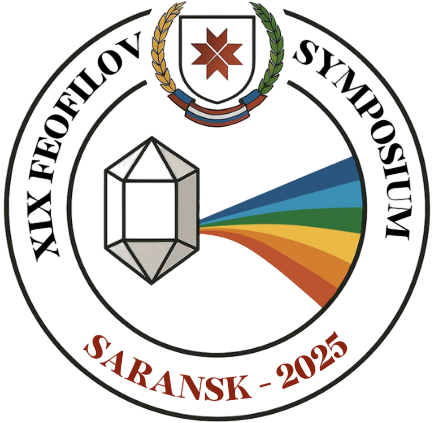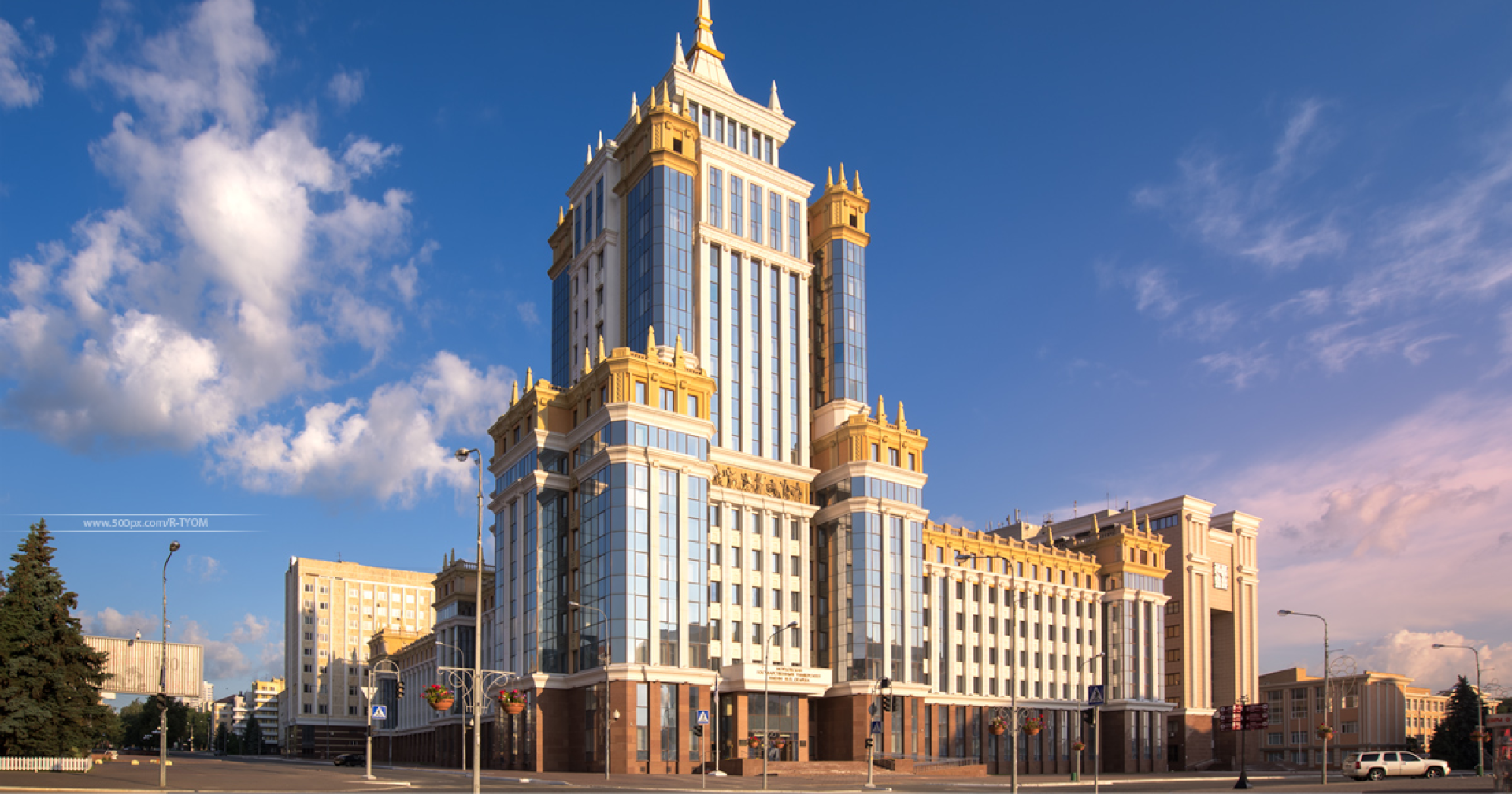Важные даты
Крайний срок подачи тезисов и регистрации — 14 июля.
Крайний срок подачи тезисов и регистрации продлён
до 31 июля.
Акты экспертизы необходимо обязательно прикрепить в личные кабинеты до конца августа.
Оформление тезисов и профиль участника
Шаблон тезиса для загрузки и профиль участника для редактирования данных пользователя
Для подачи тезисов и дальнейшей публикации работ сборнике тезисов конференции всем зарегистрированным участникам необходимо загрузить сканы файлов
экспертного заключения работы
Формат участия в конференции-очный
Первое информационное сообщение

Академик Петр Петрович Феофилов

Пётр Петрович Феофилов, один из самых известных российских ученых XX века в области оптической спектроскопии, начал свой путь в науке под руководством академика Сергея Ивановича Вавилова. П.П. Феофилов внес огромный вклад в развитие физики кристаллов, легированных ионами редкоземельных (РЗ) и переходных металлов.
Он был одним из первых в мире, кто начал систематическое изучение оптических свойств кристаллов, содержащих ионы с незаполненной f-оболочкой, например, ионы РЗ элементов и урана. Он первым обозначил такие важные проблемы, как множественные активаторные центры, кристаллохимические условия активации, физическая структура и энергетические уровни РЗ центров. П.П. Феофилов разработал и успешно применил метод поляризованной люминесценции для исследования РЗ центров. Книга «Поляризованная люминесценция молекул, растворов и кристаллов» ныне является классическим учебником по люминесцентной спектроскопии. Исследования люминесцентных свойств кристаллов, проведённые Петром Петровичем Феофиловым, позволили создать лазер на основе фторида кальция, легированного ионами самария и урана — один из первых твердотельных лазеров. Исследования П. П. Феофилова оказали большое влияние на такие области физики твердого тела, как кристаллография и оптическая спектроскопия дефектов в кристаллах. Следует также отметить, что Феофилов был дружелюбным, открытым и разносторонне талантливым человеком.
Секции конференции
- Оптическая, терагерцовая, ЭПР (электронный парамагнитный резонанс), нейтронная, мёссбауэровская спектроскопии f- и d-ионов в кристаллических и аморфных изоляторах и полупроводниках
- Когерентная, нелинейная и рамановская спектроскопии
- Динамические процессы в возбужденных состояниях, релаксация возбуждений
- Передача энергии
- Электрон-фононное взаимодействие
- Магнитооптическая спектроскопия
- Спектроскопия мультиферроиков
- Кооперативные процессы и когерентные явления
- Моделирование электронной структуры и симуляция спектров
- Микроскопическая теория обменного и сверхтонкого взаимодействий
- Явления переноса заряда и зарядового упорядочивания
- Кристаллографические аспекты разработки оптических материалов
- Квантовая обработка информации и измерительная аппаратура
- Применения спектроскопии f- и d-ионов (термометрия, сенсоры, тераностика)
Председатель: Андрей Витальевич Наумов
Пленарные докладчики

Мирослав Драмичанин, Винча институт ядерных наук Белградского университета, Белград, Сербия

Игорь Савельевич Любутин, Институт кристаллографии имени
А. В. Шубникова Национального исследовательского центра «Курчатовский Институт», Москва, Россия

Кев Минуллинович Салихов, Казанский физико-технический институт им. Е.К. Завойского РАН, Казань, Россия

Александр Иванович Смирнов, Институт физических проблем им. П.Л. Капицы РАН, Москва, Россия

Валерий Сергеевич Запасский, Санкт-Петербургский государственный университет, Санкт-Петербург, Россия
Международный консультативный комитет
Евгений Борисович Александров (Россия)
Мирослав Драмичанин (Сербия)
Филипп Голднер (Франция)
Владимир Васильевич Хижняков (Эстония)
Еугениюс Левович Ивченко (Россия)
Оскар Мальта (Бразилия)
Сергей Иванович Никитин (Россия)
Майкл Рид (Новая Зеландия)
Николай Николаевич Розанов (Россия)
Алок Шривастава (США)
Веслав Стрэнк (Польша)
Пауль ван Лосдрехт (Германия)
Брюно Виана (Франция)
Организационный комитет
Председатель: Дмитрий Евгеньевич Глушко (МГУ им. Н.П. Огарёва, Саранск)
Заместитель председателя: Полина Анатольевна Рябочкина (МГУ им. Н.П. Огарёва, Саранск)
Секретарь: Татьяна Викторовна Волкова (МГУ им. Н.П. Огарёва, Саранск)
Наталия Валерьевна Сидорова (МГУ им. Н.П. Огарёва, Саранск)
Николай Владимирович Моисеев (МГУ им. Н.П. Огарёва, Саранск)
Ирина Николаевна Евтеева (МГУ им. Н.П. Огарёва, Саранск)
Елена Петровна Трямкина (МГУ им. Н.П. Огарёва, Саранск)
Программный комитет
Сопредседатель: Борис Залманович Малкин (КФУ, Казань)
Сопредседатель: Андрей Витальевич Наумов (ФИАН, Троицк)
Сопредседатель: Марина Николаевна Попова (ИЯФ РАН, Троицк)
Ученый секретарь: Татьяна Викторовна Волкова (МГУ им. Н.П. Огарёва, Саранск)
Михаил Васильевич Ерёмин (КФУ, Казань)
Алексей Алексеевич Калачёв (Казанский научный центр РАН, Казань)
Владимир Николаевич Махов (ФИАН, Москва)
Евгений Фёдорович Мартынович (ИЛФ СО РАН, Иркутск)
Сергей Андреевич Моисеев (Казанский квантовый центр, Казань)
Александр Сергеевич Москвин (УрФУ, Екатеринбург)
Роман Васильевич Писарев (ФТИ им. А.Ф. Иоффе, Санкт-Петербург)
Полина Анатольевна Рябочкина (МГУ им. Н.П. Огарёва, Саранск)
Валерий Сергеевич Запасский (СПбГУ, Санкт-Петербург)
В память об академике Александре А. Каплянском, бывшем почётном председателе IFS.

Профессор Александр А. Каплянский — всемирно признанный учёный в области оптической спектроскопии твёрдого тела.
В 1953 году он окончил физический факультет Ленинградского государственного университета (ныне Санкт-Петербургский государственный университет).
В 1957 году, будучи аспирантом под руководством академика профессора Евгения Гросса, он защитил кандидатскую диссертацию в Ленинградском физико-техническом институте (ныне Физико-технический институт им. А. Ф. Иоффе Российской академии наук) по теме обнаружения и исследования линейчатой структуры фундаментальной границы поглощения в полупроводниках, связанной с оптическим возбуждением экситонов.
В 1967 году он защитил докторскую диссертацию на тему «Пьезоспектроскопия кристаллов». Долгое время он возглавлял лабораторию спектроскопии твёрдого тела в ФТИ им. А.Ф. Иоффе РАН. В 1987 году был избран членом-корреспондентом Академии наук СССР, а в 2003 году — академиком Российской академии наук. Профессором Каплянским были открыты и исследованы многочисленные явления:
– оптическая анизотропия кубических кристаллов в области резонанса экситонов,
– расщепление линий экситонных переходов под действием одноосного упругого сжатия кристаллов,
– экситонная структура в спектрах фотопроводимости полупроводников,
– обратимое расщепление спектральных линий в спектрах примесей в кристаллах под действием направленной упругой деформации,
– структурный фазовый ферроэластичный переход в новом классе диэлектрических кристаллов (галогениды ртути) с уникальными анизотропными свойствами,
– спонтанное образование устойчивых доменов в примесных диэлектриках (концентрированный рубин) под воздействием сильного оптического возбуждения.
Кроме того, им была установлена роль обратной локальной симметрии примесных центров в явлении выжигания дыр в спектрах примесей. В ряде работ Александр А. Каплянский и его коллеги исследовали оптическими методами терагерцовые неравновесные фононы в кристаллических и аморфных диэлектриках и полупроводниках, в системах с квантовыми ямами, керамике, волокнах: режимы их распространения, рассеяние на дефектах, взаимодействие с электронными уровнями примесей и экситонами и др.


